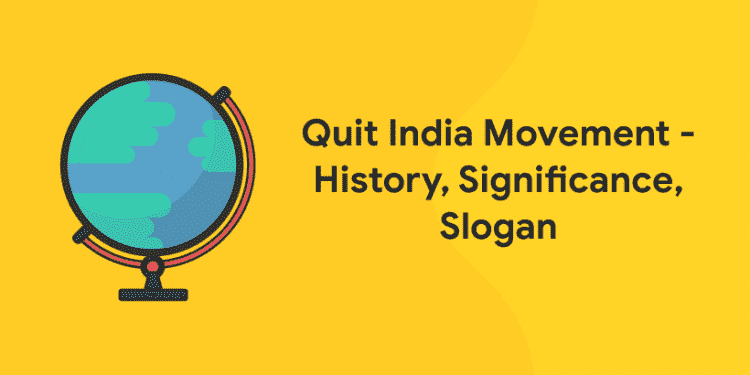Table of Contents
India was not always free. Being under colonial rule for over a century, it’s not like people will go where they’re told to or sit when they’re ordered to without reason, especially if its outsiders. People questioned, people fought, people died. Revolts and revolutions rose up and fell, leaders were made. Amidst all this, Indians had their own difference between the Hindu-Muslim communities causing the Muslim League and Congress to be formed with both having religional differences. Mahatma Gandhi was a leader born amidst colonial rule and fought without violence. The Quit India movement was the turning point in Colonial India and after many many years, we were finally given the independence we struggled for.
History
As the Second World War was ignited in 1939, India was dragged into it by the British without consultation and was made to fight. Due to the British using India only as a source of income, the Indian army was weak and under-equipped for a war. The British in turn sharply increased taxes and had to become the net contributors to India. This doubled the prices and caused increasing civil unrest.
With only some Indians reluctantly participating in the war, the British government sent Stafford Cripps to negotiate for total co-operation in the war. The Indians were naturally, unsatisfied by the terms and denied. As the war progressed many attempts were made for co-operation and when they all failed, the Congress ministers were asked to resign by the high command. This is when Mohammad Ali Jinnah, the leader of the Muslim League, rejoiced and declared he wanted a separate homeland, Pakistan.
Significance of the Quit India Movement
1: Who was the first woman President of India?
Later in 1942, the congress met at Wardha and passed a draft demanding complete independence from the British government, it also proposed mass disobedience if they did not accede to the demands. On August 8th 1942, Gandhi gave his Quit India Speech and made a call to “Do or Die”. The leaders were imprisoned and slowly the British realised they couldn’t rule India without the help of the Indians. The rest is history. The Quit India movement sparked the flames that eventually led to independence and it is one of the most important and significant movements in the entire history of Indian independence struggles.
Free UPSKILLING Courses!
Take your first step toward mastering in-demand skills, acing interviews, and securing top-tier jobs with Entri's free upskilling courses.
Start Learning!Slogans
The main slogan for the Quit India Movement is “Do or Die”. There are many other slogans used for independence as mentioned below.
- Jai Hind – Subhash Chandra Bose
- Purna Swaraj – Jawahar Lal Nehru
- Aaram Haraam Hai (Cast off your laziness) – Jawahar Lal Nehru
- Bharat Chhoro (Leave India) – Mahatma Gandhi
- Jai jawan Jai Kisan – Lal Bahadur Shastri
- Kar mat do (Don’t give tax) – Sardar Vallabhai Patel
- Sampurn Kranti (Total Revolution) – Jai Prakash Narayan
- Vijayi Vishwa Triranga Pyaara – Shyam Lal Gupta
- Vande Mataram – Bankim Chandra Chatterjee
- Jan Gan Man Adhinayak Jaya hey – Rabindra Nath Tagore
- Samarajywaad ka Naash ho – Bhagat Singh
- Swaraj (Self Rule) is my birthright and I shall have it – Bal Gangadhar Tilak
- Sarfaroshi ki tamanna, ab hamare dil me hai – Ram Prasad Bismil
- Saare jahan se achchha hindustan hamara – Iqbal
- Simon Commission Go back – Lala Lajpat Rai
- Who lives if India dies – Jawahar Lal Nehru
- Tum Mujhe Khoon Do, main Tumhe Ajadi Doonga (Give me blood and I will give you freedom) – Subhash Chandra Bose
- A blow to the sticks on my head will prove to be the nail of the casket of the British rule – Lala Lajpat Rai
- Satyameva Jayate (Truth alone will win) – Pandit Madan Mohan Malaviya
- Don’t take rest after your first victory because if you fail in second, more lips are waiting to say that your first victory was just luck. – A. P. J. Abdul Kalam
With this we hope you know more then you did before. India is rich in history culture and heritage. We’ve had our share of ups and downs and has eventually led us here to this point in time and it is up to us future generations to preserve and uphold the values our leaders thought up for the well being of the country. Keep learning and have a nice day! 🙂












